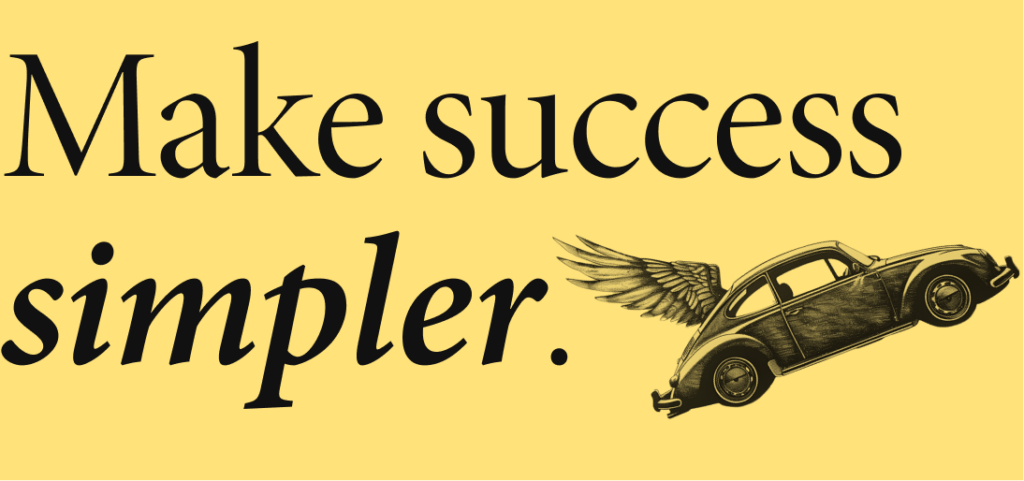Welcome to One Thing Better. Each week, the editor in chief of Entrepreneur magazine (that’s me) shares one way to achieve a breakthrough at work — and build a career or company you love.
Today’s edition is sponsored by HoneyBook – the leading AI-powered business management platform for service-based businesses.
You made something amazing, but people don’t get it.
Maybe it’s a product that customers are returning. A proposal that colleagues misunderstood. A process your team isn’t following. Or someone ignoring your request.
Now you’re frustrated. You keep thinking: What’s wrong with these people!?
Today, I’ll show you the problem: “Creating something” is only half the job. “Teaching others to understand its value” is the other half.
And that’s the half we always forget.
When you become a better teacher, your ideas will be taken more seriously, your work will thrive, and people will finally listen. And to see what that looks like, let’s start with a company who just realized this for themselves…
When other people don’t “get it”
I recently started using an AI tool called Poppy, which I love. I talked with their head of marketing. He told me something surprising: They recently cut their refund rate from 6.5% to just 3%.
In other words, 6.5% of people used to sign up, pay, and then ask for their money back. But in just a few months, Poppy cut that number in more than half.
How!?
The answer is counterintuitive and smart — but requires understanding the product. So here’s a quick primer:
Poppy looks like a digital whiteboard. A new project starts like this…
Then you drag various source materials onto the board — documents, YouTube videos, websites, voice memos, whatever.
Now it looks like this. I’ve labeled stuff from one of my own whiteboards, so you know what you’re looking at:
Finally, you connect all these things to a chatbot — and the bot is now informed by whatever’s on the board, and will do whatever you want.
It looks like this:
In the example above, I built an email sequence. I first gave it some YouTube instructional videos about email flows, websites with examples of best-in-class emails, a document outlining what I needed, and so on. Then it got to work, easily saving me 4 hours.
This is really useful, but it isn’t how most people use AI. Poppy knows that, which is why it offered free onboarding calls to all new customers.
But that refund rate was stubbornly stuck at 6.5%. That is, until Poppy investigated the problem…
How Poppy got poppin’
Poppy reached out to customers who requested refunds, offering $100 just to get on a call and explain why they’re leaving.
That’s when Poppy saw the pattern: 90% of refunds came from people who either didn’t book an onboarding call or missed their scheduled call.
In other words, these customers weren’t rejecting the product — they simply didn’t understand how to use it, then gave up trying.
So Poppy made a bold move: The company started requiring an onboarding call. When a new customer signs up, they literally cannot use the product until they book a call. And on that call, a Poppy rep will help a new customer build their first whiteboard.
Some people complained about this, saying they were “forced” into a call. But the results were undeniable: In one month, Poppy’s refund rate dropped in half.
The lesson was clear:
To succeed, you must teach
When people don’t immediately embrace what we’ve created, we tend to assume they don’t like it. But often, they simply don’t get it. They haven’t been properly oriented to see its value — and we didn’t think that’s our job.
The more I think about this, the more I see it throughout my life.
- I’ve worked at companies where new systems were implemented, but nobody adopted them. Why? Nobody taught us how to use them!
- I often ask my sons to do something, and then am frustrated when they don’t. But actually, I never showed them how to do it!
- I’ve seen managers get frustrated when team members don’t take initiative, but they never taught them what “good initiative” looks like in their role.
There’s a psychological concept called the false consensus effect, which is worth remembering: We assume that other people think like us, and that they solve problems the same way we do. But they don’t.
People often have no idea what we’re talking about. And they won’t make the effort to decipher us — not because they’re dumb, but because they have other priorities and limited time.
Nothing is immediately obvious. I mean nothing. For example: When you answer the phone, you often start by saying “Hello?” That’s not some natural human instinct. The earliest phone companies taught people to do that the 1870s — because people had no clue what to do when the phone rang.
Everything requires explanation. That’s a good thing! It means people want help — and you can shape their understanding.
How to teach like Poppy
There are infinite ways to teach, of course, but Poppy’s story offers an instructive model. We’re really asking ourselves three questions:
- What do I know, that my target audience does not? In this case, Poppy’s team understood the product — but the customer didn’t.
- Where do people typically get stuck or confused? The first time they use Poppy! They’ll either find it valuable or frustrating.
- How can I help people avoid that confusion? Make sure they see immediate benefit the first time they use the product.
Here’s how I approach this myself: I always offer an explanation.
No matter what I do, I’ve built the habit of always explaining my decisions. When I edit a story, I walk the writer through why. If I ask my team to do something, I explain its purpose. If I write advice, even in this newsletter, I’m always asking myself: Could this be misunderstood? What else needs explaining?
Steve Jobs once said: “Simple can be harder than complex.” It’s true. Making something understandable often requires as much thought as creating the thing itself.
So the next time you create something that others don’t immediately embrace, don’t just ask, “What’s wrong with them?”
Instead ask, “What haven’t I taught them yet?”
Then teach.
That’s how to do one thing better.
If you’re an overwhelmed small biz owner…

That’s an actual DM I got.
I’d just talked about HoneyBook’s new AI features — which help client-based business owners handle proposals, invoices, scheduling, client follow-ups, and more.
In response, people flooded my DMs with love for HoneyBook. It was pretty incredible.
Here’s what HoneyBook’s new AI features can help you do:
- Instant answers where you already work — Just ask, and HoneyBook AI responds with the details you need.
- Smart invoicing and email automation — Create and send invoices, emails, and contracts in seconds.
- Identify and prioritize high-value leads — Spot opportunities to increase your revenue with AI-powered insights.
Ask it things like: “What was my best selling service last year?” or “How can I improve my lead nurture?” You’ll get answers instantly.
➡️ See what HoneyBook can do for your business today.
*sponsored
Final note for today
P.S. Full disclosure: After using Poppy, I set up an affiliate arrangement with them. So if you buy the product, I’ll earn something. But truly, I was a user first!
